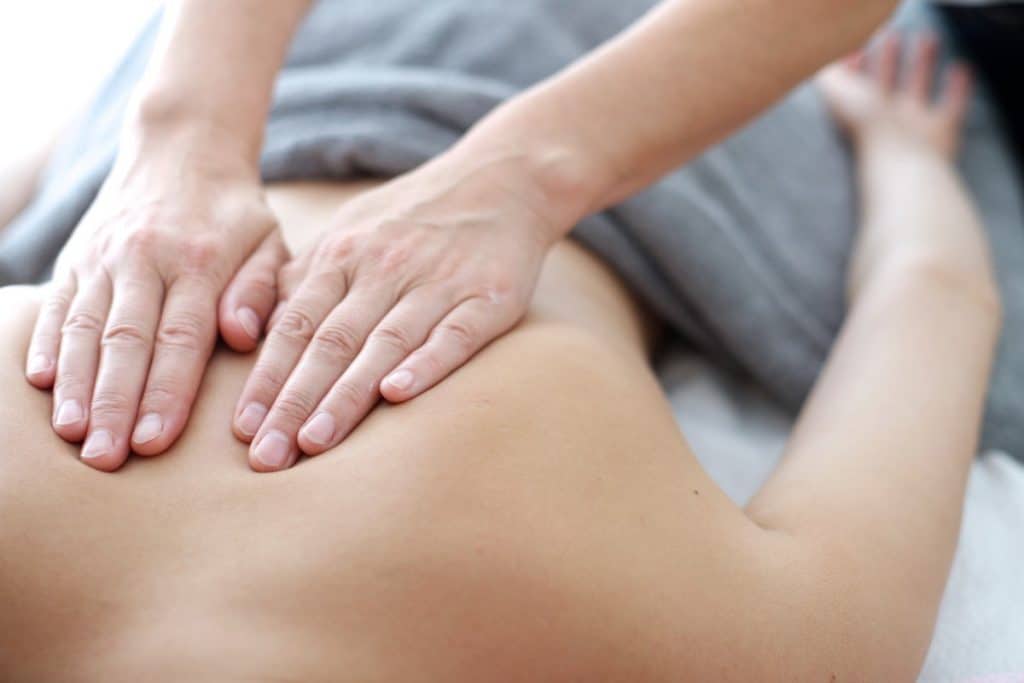Soft Tissue Massage Techniques is a powerful tool for easing pain, boosting flexibility, and aiding in healing. It's great for both massage therapists and those who want to add self-care to their routine. This guide will cover the key points of soft tissue massage. You'll learn how to use it to change your life for the better.
Key Takeaways
- Soft tissue massage targets the deeper layers of muscle and connective tissue to alleviate pain and improve flexibility.
- Proper body mechanics and clear communication with clients are crucial for performing safe and effective soft tissue massage.
- Self-administered soft tissue massage techniques can be a valuable addition to your wellness routine.
- Incorporating soft tissue massage into your lifestyle can enhance the benefits of other complementary therapies, such as physical therapy and chiropractic care.
- Mastering soft tissue massage techniques requires patience, practice, and a commitment to continuous learning.
Understanding Soft Tissue Massage
Soft tissue massage is a healing method that works on the body's soft parts. This includes muscles, tendons, and ligaments. It uses strokes, kneading, and pressure to help heal and relax these areas.
What is Soft Tissue Massage?
Soft tissue massage is a special massage for muscle and joint problems. It's not as deep as deep tissue massage. Instead, it uses different pressures and strokes to ease pain and injuries.
Benefits of Soft Tissue Massage
- Increased blood flow and oxygen supply to the affected areas
- Reduced pain and inflammation
- Decreased muscle cramps and spasms
- Improved range of motion and flexibility
- Enhanced mind-body connection
Soft tissue therapy often shows big improvements right away. It's great for muscle aches, poor posture, and injuries. Many people feel better right away, especially with back and shoulder pain.
| Soft Tissue Massage | Deep Tissue Massage |
|---|---|
| Uses a variety of pressures, depths, and durations | Involves longer, slower, and more forceful strokes |
| Favored for relaxation purposes | Effective in breaking up scar tissue, increasing range of movement, and improving posture |
| Alleviates aches, pains, and injuries | More appropriate for injury recovery |
There's a move to call it soft tissue therapy instead of massage. This change helps avoid confusion. After a few sessions, people feel a lot better. It's a good investment for treating injuries, especially with the right exercises and regular therapy.

Soft Tissue Massage Techniques
Self-Administered Soft Tissue Massage
Adding self-massage to your daily routine can help with muscle pain and improve flexibility. Using tools like wooden spoons or drumsticks for the "slide and glide" motion is effective. This method applies gentle pressure to tense areas, breaking down adhesions and boosting blood flow.
Targeting trigger points is another useful self-massage technique. These are tight, sensitive spots in muscles. Applying firm pressure on these areas can release muscle knots and reduce pain. Always listen to your body and adjust the pressure to stay comfortable.
Professional Soft Tissue Massage Techniques
Professional massage therapists use various techniques to tackle soft tissue issues. They use elbows, fists, and knuckles to apply deep pressure. This helps release muscle tension and enhances movement. It's crucial to communicate with your therapist to ensure a comfortable and effective session.
Swedish and deep tissue massages are great for soft tissue mobilization. Swedish massage relaxes muscles and improves blood flow with long strokes. Deep tissue massage targets deeper muscle layers to tackle stubborn issues.
Incorporating Soft Tissue Massage into Your Routine
Adding soft tissue massage to your weekly routine can greatly improve your health and happiness. It can be a 20-30 minute self-care session or a visit to a professional. This regular practice helps you stay connected with your body, catch issues early, and keep your flexibility and mobility high.
Regular soft tissue massage boosts blood flow, improving circulation. This helps your immune system by enhancing lymph flow. It also reduces pain from arthritis and sports injuries. Plus, it increases serotonin and dopamine, making you feel better and sleep better.
To get the most from soft tissue massage, include it in your weekly self-care massage routine. Try Swedish, deep tissue, sports, hot stone, or reflexology to meet your needs. Adding stretching, staying hydrated, and creating a calm space can make the experience even better.
"Regular visits for professional massage therapy are beneficial, and extending benefits into daily life through self-massage techniques, stretching, hydration, and creating a relaxing environment."
Don't think soft tissue massage is only for relaxation. It's essential for your overall health. By making it a regular part of your routine, you'll see many benefits. These include better circulation, flexibility, stress management, and pain relief.
Start using integrating soft tissue massage in your weekly routine. Whether you do it yourself or see a professional, it's a holistic way to improve your well-being. It helps you stay on top of your physical and mental health.

Complementary Therapies for Optimal Results
Soft tissue massage works well with other therapies like physical therapy and chiropractic care. Together, they create a plan that meets your specific needs. This approach boosts your overall health and well-being.
Combining Soft Tissue Massage with Physical Therapy
Adding soft tissue massage to physical therapy can improve results. Massage boosts blood flow and flexibility, making the body ready for exercise. Physical therapy then strengthens and rehabilitates, helping with pain, sports performance, and injury recovery.
Soft Tissue Massage and Chiropractic Care
Chiropractic care and soft tissue massage tackle musculoskeletal problems together. Chiropractors align the spine and joints, while massage therapists work on soft tissues. This integrative healthcare method relieves back, neck, and headache pain. It also boosts flexibility and mobility.
"Massage therapy is more effective when combined with other complementary therapies, such as physical therapy and chiropractic care. By working together, these modalities can address the root causes of pain and promote holistic healing."
Looking for soft tissue massage and physical therapy or soft tissue massage and chiropractic care? Find a healthcare team that works together for a tailored plan. Using these complementary therapies can maximize soft tissue massage benefits.
For more information click in the link below: about differents Chiropractics Manipulatives Treatments
Conclusion
Mastering soft tissue massage can greatly improve your health and mind. By learning about its benefits, you can ease pain, boost flexibility, and aid in healing. Adding it to your daily routine can make a big difference.
Combining soft tissue massage with other therapies can lead to even better health outcomes. This approach can help you achieve your wellness goals more effectively.
The main points about soft tissue massage are clear. It relaxes muscles, relieves tension, and helps with injuries and joint health. It also boosts athletic performance, mental health, and circulation.
Studies show it improves blood flow and releases endorphins, which are natural painkillers. This makes soft tissue massage a valuable tool for health.
By using soft tissue massage, you can manage pain and stress better. This article has given you the knowledge to improve your health and well-being. It shows how soft tissue massage can be a powerful tool for self-care.
FAQ
What is soft tissue massage?
Soft tissue massage is a way to work on the body's soft parts. This includes muscles, tendons, and ligaments. It uses strokes, kneading, and pressure to help these areas.
What are the key benefits of soft tissue massage?
Soft tissue massage helps in many ways. It boosts blood flow and oxygen. It also reduces pain and inflammation. Plus, it helps with muscle cramps, improves movement, and connects the mind and body.
How can I perform self-administered soft tissue massage?
This article will guide you on how to massage yourself. You can use tools like wooden spoons or drumsticks. It also teaches the "slide and glide" motion.
What are the professional soft tissue massage techniques?
The article will cover professional massage techniques. It talks about using elbows, fists, and knuckles for pressure. It also stresses the need for client and therapist to communicate for comfort and results.
How often should I incorporate soft tissue massage into my routine?
Adding soft tissue massage to your weekly routine is beneficial. The article suggests doing it for 20-30 minutes a week. It highlights its importance for health and well-being.
How can soft tissue massage be combined with other complementary therapies?
Soft tissue massage works well with other therapies like physical therapy and chiropractic care. The article shows how these can help manage pain, improve sports performance, and boost overall health.
Source Links
- https://www.spatheory.com/spa-theory-wellness-beauty-blog/deep-tissue-massage-techniques
- https://burnabyheightsphysio.ca/massage-therapy-techniques/
- https://fayepattison.com/blog/what-is-the-difference-between-a-soft-and-deep-tissue-massage/
- https://sportandspinalphysio.com.au/what-is-soft-tissue-therapy-and-why-you-should-care/
- http://ptcentral.org/primary-services/soft-tissue-mobilization/





